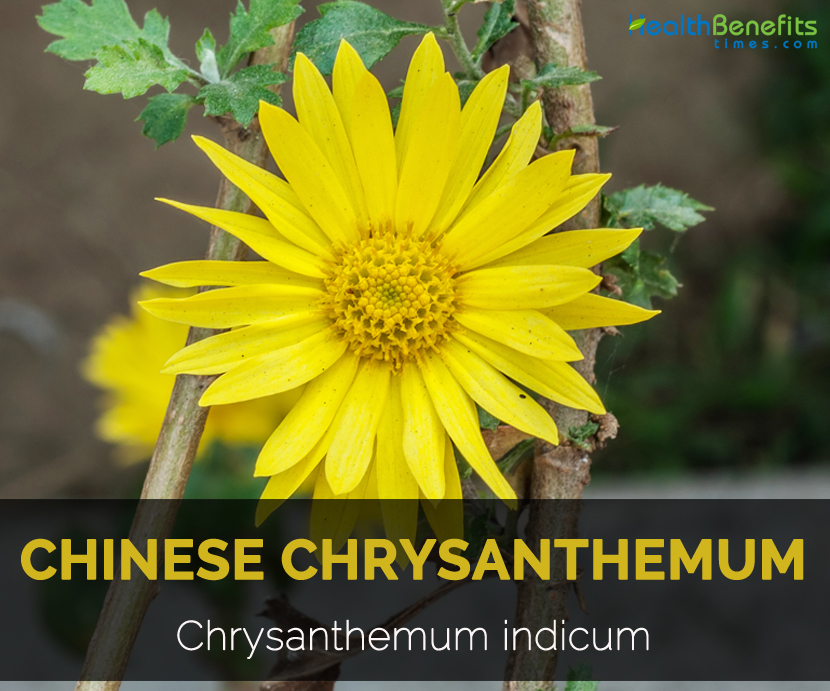| Chinese Chrysanthemum Quick Facts |
| Name: |
Chinese Chrysanthemum |
| Scientific Name: |
Chrysanthemum indicum |
| Origin |
The plant is inherent to East Asia-Eastern China and Central and Southern Japan. |
| Shapes |
Achene, cuneateoblong, compressed |
| Health benefits |
Treatment for hypertension, inflammation, respiratory disease, whooping cough, sore eyes |
Chrysanthemum indicum is an annual or perennial herb growing 25 to 100 cm tall. It has erect, glabrous, sulcate, sparingly branched, green stem as well as short procumbent rhizomes. Leaves are alternate which is pale green below and dark green above, deeply lobed, ovate to elliptic ovate and irregularly toothed found on 1 to 2 cm long petioles. Inflorescence is in axillary or terminal corymb of many small heads, long peduncled measuring 1 to 1.5 cm in diameter. Fruit is achenes which are very small, cuneate oblong, grooved and compressed. Other common names for Chinese Chrysanthemum are False Camomile, Indian Chrysanthemum, Garden Camomile, Ground Apple, Mother’s Daisy, Whig Plant, Roman Camomile, Winter Aster, Mother’s daisy.
Traditional uses
- In Oriental traditional medicine, it is used for treating colitis, pneumonia, cancer, stomatitis, sores, fever, intoxication, inflammatory diseases, pertussis, vertigo, hypertension, respiratory ailments and hypotensive symptoms.
- In Southeast Asia and India, the plant is used as blood tonic, antiphlogistic, antipyretic, aperient, vulnerary, febriguge and is used for treating eye ailments.
- It is used for treating hypertension, inflammation and respiratory diseases.
- The plant is used in India with black pepper for treating gonorrhea, calculi, brain affects and also used as an antidote for mental depression.
- In Malaya, the plant is used for headaches, colds and as a poultice for sores.
- The flower or entire plant is useful for whooping cough.
- In Vietnam, flowers are used for treating fever, cold, vertigo, photopsia, dacryolithiasis, ophthalmia, hypertension, amblyopia, xerophthalmia, phlegmon, furunculus and boils.
- Apply the poultice made from flowers externally for curing furunculosis.
- Flowers are used as a tonic for alleviating cough and use it externally for lowering bruising.
- Flowers emulsion is used for cervix infections.
- Flowers are used for treating sore eyes in Malaya.
- In Guan, flowers infusion is used as an aid for intermittent fevers and used by women to aid menstrual problems and hysteria.
- In Indochina and China, leaves are used for treating migraine.
How to Eat
- In Japan, flower heads are consumed by marinating in vinegar.
- In China, it is used as vegetables.
- Use the dried flowers in mixed spices or as food additives to add flavor.
- It could be used in the form of herbal tea or beverages after sweetening with honey or sugar.
Precautions
- Allergic people should not use it.
- Use it in moderate amounts.
- Consult the health practitioner for use.
References:
https://www.itis.gov/servlet/SingleRpt/SingleRpt?search_topic=TSN&search_value=37228#null
http://greenlifeuniverse.com/species/chrysanthemum-indicum.html
Comments
comments


